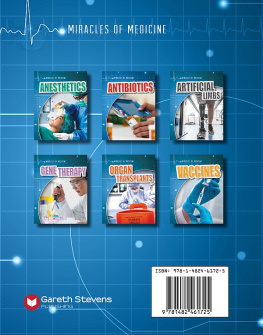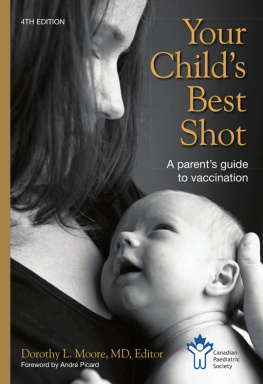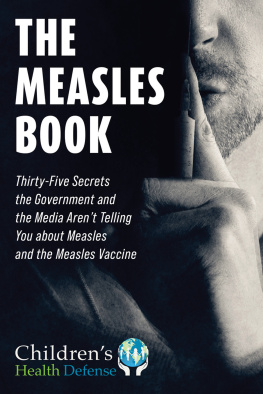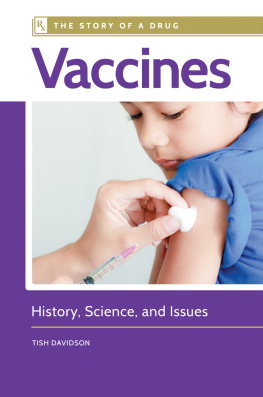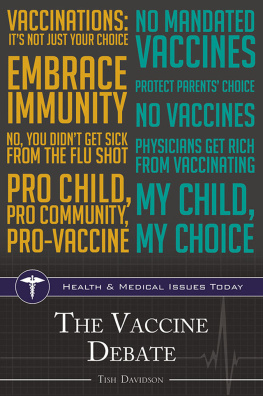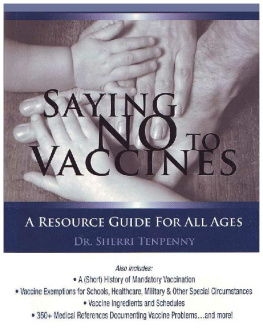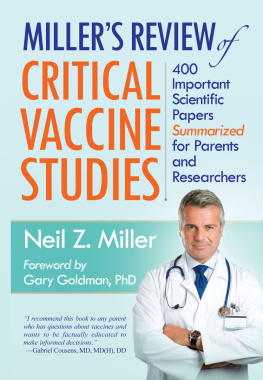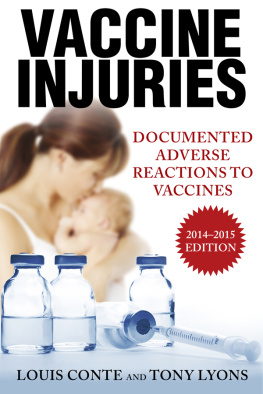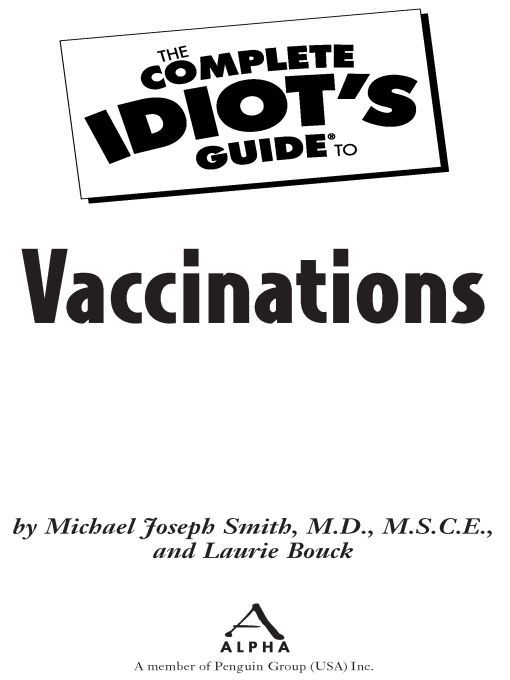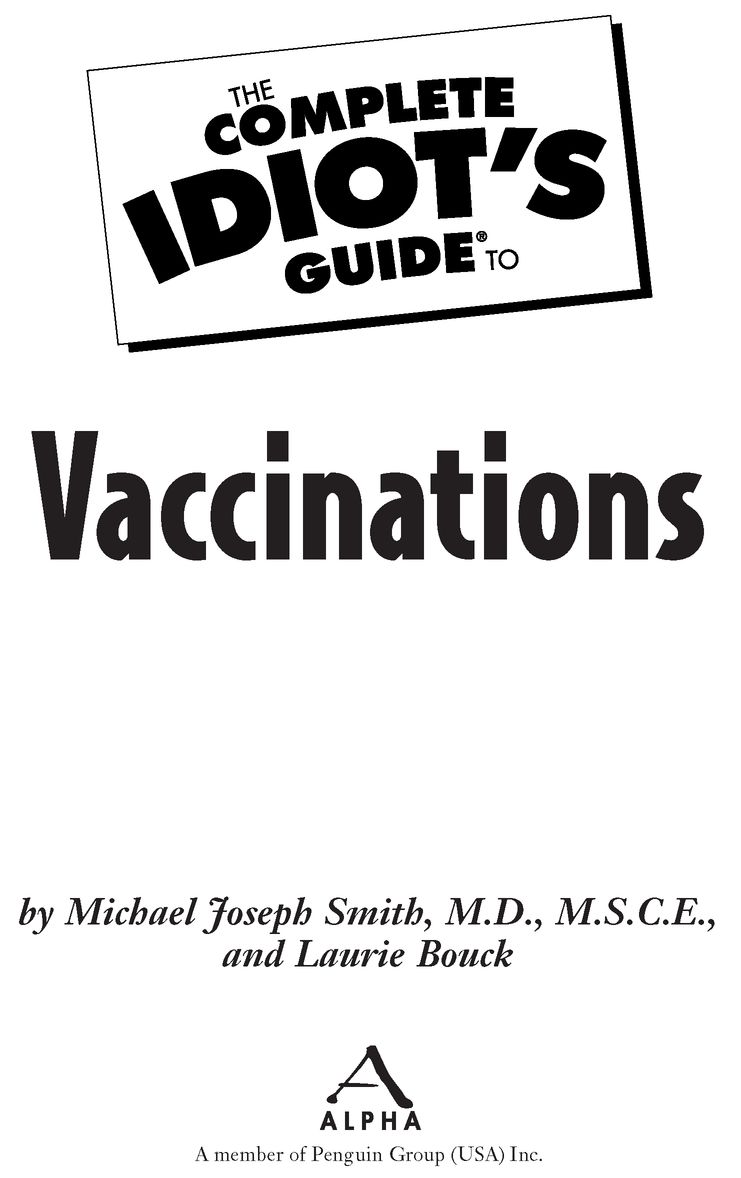Table of Contents
This book is dedicated to my wife and parents. Your never-ending love and support are my
inspiration.Michael Smith
For my husband and fellow writer, Rob, a true partner who understands a writers life.
Laurie Bouck
Introduction
Everyone, it seems, has an opinion about vaccinations. A doctor, a nurse, or a parent who has seen a child suffer from a vaccine-preventable disease such as a Hib infection will probably become a strong advocate for childhood vaccinations. A parent whose child is diagnosed with autism, on the other hand, might believe that a vaccine caused the disorder. Someone else might believe that vaccines are no longer necessary because the diseases they prevent are so rare in the United States.
Information you hear in the media about vaccines sometimes confuses the issue. For example, you might hear about dangerous measles outbreaks among unvaccinated children, but also hear that childhood vaccines are dangerous because they might cause certain childhood diseases.
Without a doubt, vaccines can be a confusing topic. Part of the problem is the fact that vaccines are usually given to healthy people to prevent diseases they might never be exposed to. Medications such as antibiotics, on the other hand, are usually given to sick people to help them get better, and patients can soon tell whether the medications worked. If you are healthy when you get a vaccination and stay healthy afterward, you might not see any benefit to the vaccine you received. Its not surprising that some people have questions about vaccines.
This book tries to answer those questions. This book explains what vaccines are, how they are made, how they work, and why they are still important. You will learn what vaccines are recommended at different ages, for everyone from infants to seniors, and what vaccines special populations might need, such as chronically ill people, pregnant women, and international travelers. You will learn when you might need a tetanus booster after an injury, how some vaccines might protect us from bioterrorism, and what new vaccines you might see in the future.
This book also explains many issues that are often raised about vaccines, such as whether they can cause illnesses or injuries, why children now receive so many vaccines, and what to do if you believe you were harmed by a vaccine. It covers federal and state policies behind vaccines, such as vaccination requirements for school-age children, funding programs to make vaccines available to more people, and programs designed to safeguard the vaccine supply in the United States.
In the end, we hope that this book answers all your questions about vaccinations, and provides the information and resources you need to make the best choices for yourself, your family, and your community.
Please note that the information in this book is based on 2009 vaccination recommendations. Because these recommendations can change yearly, check with your health-care provider or the Centers for Disease Control and Prevention to find vaccination recommendations after 2009.
How This Book Is Organized
This book is divided into four sections, covering both general information on vaccines and specific recommendations for each age group.
Part 1, Understanding Vaccines, explains where the concept of a vaccine came from, and how the first vaccine was created. We also explore how vaccines work within your complex immune system to strengthen your response to certain diseases. Lastly, you will learn how vaccines from your health-care provider are tested, regulated, and administered.
Part 2, Standard Vaccinations for Every Age, explains what vaccines you need at every stage of life, what diseases these vaccines prevent, and why each vaccine is given at a specific age.
Part 3, Episodic and Circumstantial Vaccinations, covers vaccinations you might need under special circumstances, such as a rabies vaccination after an animal bite or a yellow fever vaccination for international travel. This part also discusses potential vaccines being developed now, such as malaria, HIV/AIDS, and cancer vaccines.
Part 4, Vaccination Controversies, discusses controversies surrounding vaccines, such as whether vaccines can cause disease, the use of fetal cells in creating some vaccines, when and why vaccines sometimes dont work, and what causes vaccine shortages.
Sidebars
Vaccines have influencedand been influenced byfederal law, American and international history, and scientific advances. Throughout the book, youll find sidebars about these and other topics to make your reading experience more enjoyable and informative. Look for these special highlights for more information:
Brain Booster
Additional information about health issues and the medical field.
Vaccinating Facts
Interesting facts and tidbits about vaccinations.
Health Advisory
Health and vaccination issues to watch out for.
definition
Medical and health terms explained or clarified.
Acknowledgments
This book would not be possible without the efforts of the countless scientists, clinicians, and public health workers who have dedicated their careers to the prevention of vaccine-preventable diseases. I am especially grateful for the wisdom and guidance of Drs. Georges Peter, Penelope Dennehy, and Paul Offit. Thank you for your hard work on the behalf of childrens health.Dr. Michael Smith
I would like to thank my agent Marilyn Allen for approaching me with this book, a complex but important topic in medicine. Many thanks to my co-author, Dr. Michael Smith, for his insights into epidemiology and many fascinating discussions of the medical and social issues surrounding vaccination.
I found excellent background research online at the websites for the Centers for Disease Control and Prevention, the National Network for Immunization Information, and the Childrens Hospital of Philadelphias Vaccine Education Center. These organizations work hard to provide accurate, accessible, and timely information about vaccinations.Laurie Bouck
Trademarks
All terms mentioned in this book that are known to be or are suspected of being trademarks or service marks have been appropriately capitalized. Alpha Books and Penguin Group (USA) Inc. cannot attest to the accuracy of this information. Use of a term in this book should not be regarded as affecting the validity of any trademark or service mark.
Part 1
Understanding Vaccines
Did you know that the first vaccine was made over 200 years ago, for a disease that was finally eradicated worldwide in the 1970s? Do you know how vaccines create immunity to a disease, and how they are developed today?
In this part, well explain when and how vaccination began, how vaccines work, what kinds of diseases they protect against, how vaccines are developed today, and who makes recommendations about the vaccines you might need.


